Exploring the Latest Jewelry Trends: Styles & Insights
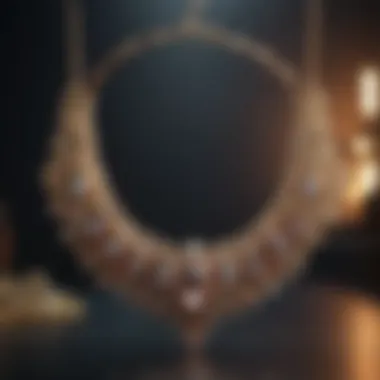
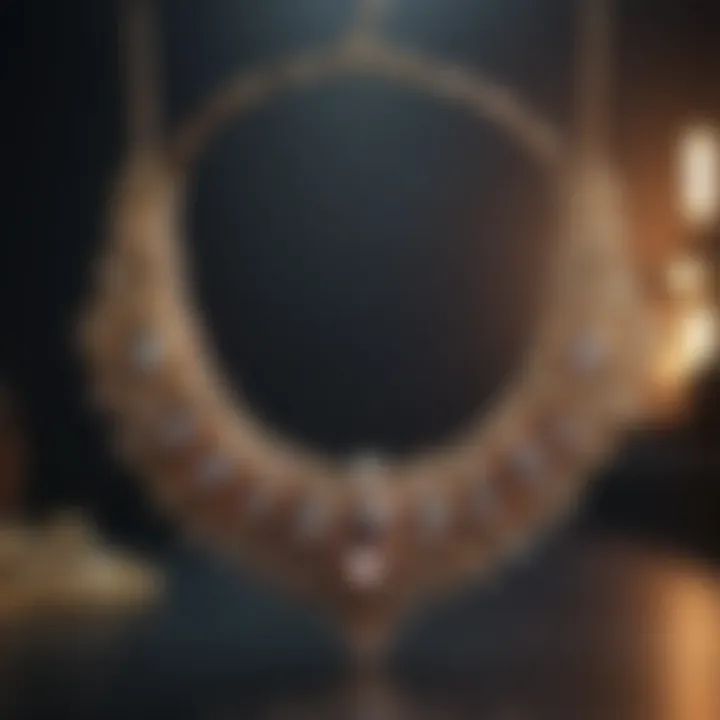
Intro
The jewelry industry is an ever-evolving field, constantly responding to changes in consumer preferences and societal trends. As we navigate through the current landscape, it’s clear that these shifts are driven by various factors including technological advancements, cultural influences, and sustainability concerns. This article provides a comprehensive guide to understanding the latest jewelry trends, detailing styles, materials, and the general sentiment surrounding consumer choices today.
Fashion in jewelry not only mirrors aesthetic preferences but also reflects deeper cultural narratives. For instance, the rise of personalized jewelry underscores a growing desire for individuality in an increasingly global market. Consumers are searching for pieces that tell their story or represent their beliefs. Additionally, as environmental awareness rises, eco-friendly practices in jewelry making are gaining traction.
In the sections that follow, we will explore these trends in more depth, providing insights into how they shape the modern jewelry market and what factors consumers should consider when shopping. By examining these dynamics, readers will be better equipped to make informed choices in their jewelry investments.
Preamble to Current Jewelry Trends
In the realm of fashion, jewelry is not merely an accessory. It serves as an important expression of identity, status, and even emotional sentiments. Understanding the current jewelry trends is crucial for both consumers and designers. Today's jewelry is influenced by various factors including cultural shifts, innovations in materials, and evolving personal preferences. Keeping track of these trends provides insights into how individual choices reflect broader societal movements.
Defining Jewelry Trends
The term "jewelry trends" encompasses the styles, materials, and designs that gain popularity over specific periods. This can include everything from the rise of minimalist pieces to the revival of vintage designs. It is essential to define these trends clearly because they impact purchasing behavior and design strategies.
- Style Variations: Trends often involve distinctive stylistic elements such as colors, shapes, and sizes. For instance, the current inclination towards geometric designs reflects a desire for simplicity and sophistication.
- Material Shifts: Jewelry materials have also transformed dramatically. The demand for sustainable and ethically sourced materials is influencing how consumers perceive value and craftsmanship.
- Cultural Influences: Trends are not static. They evolve based on cultural events, celebrity endorsements, and social movements, making them dynamic in nature.
The Role of Culture in Jewelry Trends
Culture plays a pivotal role in shaping jewelry trends. Traditions, art, and social values can affect what types of jewelry are worn and celebrated.
- Cultural Symbolism: Different cultures imbue jewelry with unique meanings, making certain styles more relevant in some regions than others. For example, in some Asian cultures, jade is considered a powerful symbol of protection and good fortune.
- Fashion Movements: Events like fashion weeks or art exhibitions can set new trends. Designers frequently draw inspiration from cultural heritage, using motifs and designs that resonate with societal values.
- Global Connectivity: Today, the internet allows for cross-cultural exchanges like never before. This has led to a blending of styles. Jewelry that once belonged to a specific culture can now become a global trend.
"The interplay between culture and jewelry design creates a rich tapestry of influences that shape not only what we wear but how we understand beauty and identity in the broader context."
In summary, understanding the underlying factors that shape current jewelry trends is vital. It connects deeper meanings and consumer choices in a constantly evolving industry.
Emerging Jewelry Materials
Emerging jewelry materials hold significant relevance in today’s evolving jewelry industry. As consumer preferences shift towards sustainability and innovation, these materials play a crucial role in shaping modern designs. The use of new materials not only enhances the aesthetic appeal of jewelry but also addresses concerns about the environment and ethical sourcing.
Sustainable Materials
Sustainable materials are becoming increasingly important in jewelry trends. Consumers are now more aware of the environmental impact of their purchases. As a result, designers are incorporating recycled metals, ethically sourced gemstones, and innovative alternatives like lab-grown diamonds.
- Recycled Metals: By utilizing recycled gold or silver, jewelers minimize waste and reduce the demand for newly mined resources. This practice supports sustainability in the industry.
- Ethical Gemstones: Natural stones often come with ethical concerns regarding their sourcing. Jewelers now favor stones certified by organizations that uphold human rights and environmental standards.
- Lab-grown Diamonds: These diamonds offer a guilt-free option for consumers who desire this classic stone without the moral dilemma attached to traditional diamond mining. They possess similar physical and chemical properties to natural diamonds.
Overall, the incorporation of sustainable materials enhances a piece's value beyond aesthetics, making it more aligned with modern values. Through these choices, consumers contribute to a more responsible future for the jewelry industry.
Synthetic vs. Natural Gemstones
The debate between synthetic and natural gemstones continues to grow in the context of consumer preferences. Each type has its unique attributes, making them appealing for different reasons.
- Natural Gemstones: These stones are cherished for their rarity, history, and authenticity. Many buyers invest in natural gemstones for their potential value increase and the story behind each piece.
- Synthetic Gemstones: On the other hand, these provide an alternative that often comes at a lower cost. Synthetic gemstones can mimic the aesthetic qualities of natural stones while offering consistency and quality that is sometimes hard to find in their natural counterparts. The technology has advanced rapidly, making synthetic gems difficult to distinguish from genuine ones.
Influential Jewelry Designers
The world of jewelry design is shaped significantly by its designers. Their creativity goes beyond mere aesthetics; it influences market trends, consumer choices, and even cultural movements. Understanding the key players in this field helps to appreciate the intrinsic value of pieces that go beyond their physical form. With global connectivity, designers can leverage different materials, techniques, and inspirations that reflect a diverse set of values and ideas. This pivotal role is acknowledged in the ongoing evolution of personal expression through jewelry.
Spotlight on Renowned Designers
Renowned designers have carved out unique identities within the jewelry space. Figures such as Cartier, Tiffany & Co., and Bulgari are not just brands; they represent a legacy of craftsmanship and design innovation. Each of these houses has distinct aesthetics that appeal to different consumer segments while also embodying luxury and fine artistry.
For example, Cartier is known for its groundbreaking use of color and gemstones, often creating pieces that serve more than decorative purposes— they are statements of identity and status. On the other hand, Tiffany & Co. emphasizes its heritage while incorporating modern elements into its designs, making it approachable for the younger demographics. This versatility is key in maintaining relevance in a quickly changing market.


"The language of luxury is not just spoken but felt through the artistry and vision that designers bring to life."
These designers continuously engage with both classic techniques and emerging trends, allowing for a balance between tradition and modernity. They are pivotal in shaping consumer expectations and preferences, and they provide a roadmap for upcoming designers.
New Voices in Jewelry Design
While established designers hold their ground, emerging talents are paving new paths in jewelry design. Their fresh perspectives reflect contemporary issues, such as sustainability and individuality. Brands like Missoma and Alighieri have gained significant traction, particularly among younger consumers. They emphasize customization and personal stories in their pieces, making the act of wearing jewelry more meaningful.
New designers are often more attuned to the social dynamics of today. Many prioritize ethical sourcing and innovative materials which resonate well with environmentally-conscious consumers. This shift not only paves the way for new trends but also demonstrates the impact that modern values can have on the art of jewelry making.
Additionally, platforms like Instagram and Etsy enable these new voices to reach broader audiences. Through social media, designers can showcase their work directly to potential consumers, fostering a community around their brand. This interaction helps to build rapport and engages customers in the design process, leading to highly personalized pieces.
In summary, both renowned designers and new voices are instrumental to the jewelry landscape. The interplay between established and emerging talents creates a rich tapestry of styles that cater to diverse tastes and preferences.
Popular Styles in Jewelry
The realm of jewelry is in constant flux, reflecting broader cultural changes and personal expressions. Recognizing the popular styles in jewelry can provide significant insight into current trends as well as individual preferences. The importance of discussing these styles lies in their ability to influence purchasing decisions, as well as to guide consumers in selecting pieces that resonate with their unique identity.
Trends in jewelry often push the boundaries of traditional design while also drawing inspiration from classic aesthetics. As such, they cater not only to fashion enthusiasts but also to those seeking meaningful personal connections through their accessories. This makes understanding current styles essential for anyone interested in the jewelry market.
Minimalism and Its Impact
Minimalism in jewelry reflects a philosophy that prioritizes simplicity and function. It is characterized by clean lines, understated elegance, and a focus on quality. This style resonates particularly well across various demographics, appealing to a broad base of consumers. Minimalist pieces often elicit a sense of calm and sophistication, thereby attracting individuals who prefer subtler forms of self-expression.
The impact of minimalism is evident in its widespread adoption by both established and emerging designers. As consumers become more conscious of sustainability and aesthetics, minimalism aligns with these values. Some key elements to consider include:
- Timelessness: Minimalist jewelry tends to transcend seasonal trends, making it a sound investment.
- Versatility: Such pieces can seamlessly integrate into various outfits and occasions, enhancing their practical appeal.
- Focus on Craftsmanship: The simplicity of minimalist designs often highlights the quality of the materials and the skill of the artisan.
With the rise of influencers promoting minimalist lifestyles, the demand for simple yet elegant designs has significantly increased among consumers of all ages. This trend aligns not only with fashion but also with a growing desire for mindfulness and intention in personal choices.
Statement Pieces and Bold Designs
Contrasting with minimalism, statement pieces in jewelry embody an audacious approach to adornment. These designs stand out due to their size, color, or intricate detail, often serving as conversation starters. The resurgence of bold jewelry reflects a cultural shift towards self-assertion and individuality.
Statement pieces cater to those who view jewelry as an essential aspect of their identity rather than just accessories. Here are some notable characteristics:
- Vivid Colors: Many statement pieces incorporate bold hues, drawing attention and allowing for personal expression.
- Unique Shapes: The creativity in forms used in these designs often defies conventional jewelry norms, appealing to those with avant-garde sensibilities.
- Cultural References: Many bold designs draw inspiration from diverse cultural elements, enriching their significance and connection to identity.
In recent years, social media platforms have played a crucial role in popularizing statement jewelry. Influencers showcase bold designs, inspiring their followers to express uniqueness through their adornments. This fascination with statement pieces is likely to grow, further reflecting the ongoing evolution of personal style in jewelry.
"Bold jewelry is not just about aesthetics; it’s a powerful means of personal expression and cultural reflection."
In summary, popular styles in jewelry provide insight into societal values, personal preferences, and the evolving nature of adornment. By examining minimalism and statement pieces together, we can appreciate the diversity and complexity of current jewelry trends.
Trends in Personalization
Personalization in jewelry has gained significant traction in recent years. This trend reflects a growing desire for individuality and self-expression among consumers. The ability to create pieces that resonate on a personal level enhances their emotional value. It’s no longer just about the aesthetics of jewelry; it’s about the stories and meanings behind each piece. Adopting personalized jewelry trends enables wearers to showcase their unique identities and experiences. As consumers increasingly align with brands that share their values, jewelry personalization fulfills this balance.
Initials and Name Pieces
Initials and name pieces are among the most popular forms of personalized jewelry currently trending. These items often take the shape of necklaces, rings, or even bracelets. Wearing one’s name or initials can symbolize pride in one's identity. The trend is not confined to classic designs. Modern interpretations include intricate fonts, bold letters, and custom materials, providing myriad options for customization.
Embracing initials in jewelry caters to a wide demographic range. For many women, it allows personal expression and creativity. Furthermore, initials can have deeper significance. They might represent family, children, or cherished loved ones. The trend also extends to couples, where partners may wear matching initials as a sign of connection.
"Jewelry personalized with initials or names infuses everyday looks with a touch of meaning, making even the simplest outfits feel special."
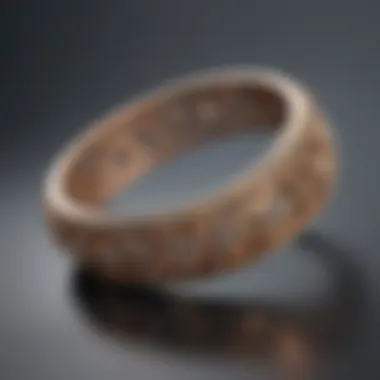
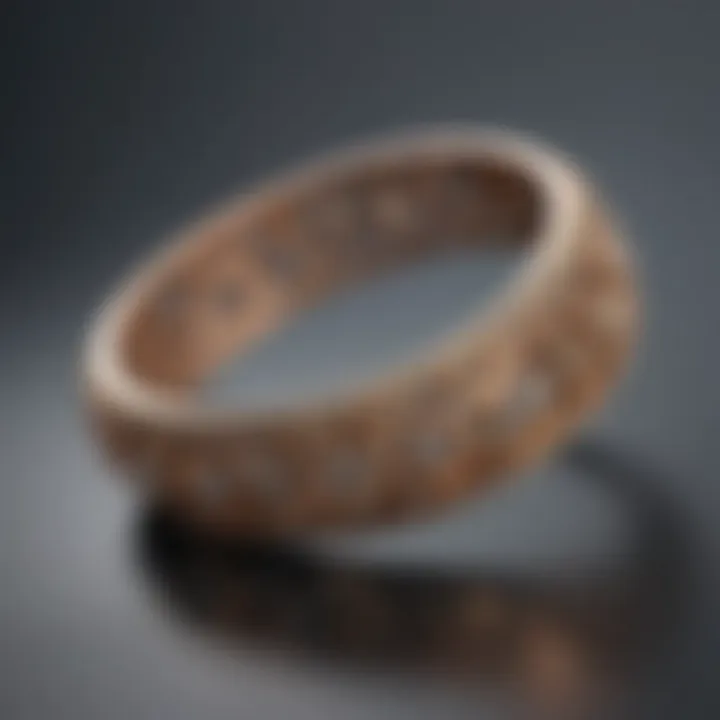
Custom Design Trends
Custom design trends have opened new doors for creativity in jewelry making. With advancements in technology and increased access to skilled artisans, individuals can now work directly with designers to create unique pieces. Custom-designed jewelry ranges from engagement rings to everyday wear items. The process provides an opportunity for clients to contribute ideas and specifications, resulting in a completely exclusive piece.
Moreover, engaging with custom jewelry helps consumers forge a connection with the artisanal process. Each custom piece not only reflects the wearer’s style, but also embodies craftsmanship and artistry. The trend leans heavily on sustainability, as many consumers prefer responsibly sourced materials for their bespoke items.
Through personalized and custom designs, consumers are not just purchasing jewelry; they are investing in their stories, memories, and values.
Technological Innovations
Technological innovations have transformed the jewelry industry in profound ways. These advancements facilitate new methods of design and production, ensuring that jewelers can meet the growing demands of consumers while maintaining quality and uniqueness. Understanding these innovations is vital, as they reflect a shift in consumer expectations and influence overall trends in the market.
3D Printing in Jewelry
3D printing has revolutionized jewelry design and manufacturing, enabling a level of customization previously thought impossible. Jewelers can create intricate designs with precision, allowing for unique pieces tailored to individual tastes.
- Customization: Customers can make specific requests, resulting in one-of-a-kind items. This trend aligns with the growing demand for personalized jewelry.
- Cost Efficiency: Traditional methods can be expensive, especially for intricate pieces. 3D printing minimizes material waste and lowers production costs. This efficiency can translate into lower prices for consumers.
- Rapid Prototyping: Designers can produce quick prototypes, refining designs faster and allowing them to respond to market trends promptly. The agility provided by 3D printing is invaluable in an industry that evolves constantly.
However, there are considerations to keep in mind. The quality of materials used in 3D printing can differ from traditional jewelry materials, which could impact the overall look and durability of the final piece. Jewelers must navigate these complexities while leveraging the benefits of the technology.
Augmented Reality and Virtual Try-Ons
Augmented reality (AR) technology has enhanced the shopping experience for many consumers. Through virtual try-ons, customers can visualize how a piece of jewelry looks on them without needing to physically wear it.
- Convenience: Consumers can try on jewelry from the comfort of their homes, eliminating the need to visit stores. This convenience has gained importance, especially in the context of a post-pandemic world.
- Better Decision-Making: Virtual try-ons enhance the purchasing experience by providing visual context. Customers can better understand how different styles and sizes complement their features, leading to more informed decisions.
- Increased Engagement: Brands that utilize AR technology often find that it increases customer interaction on their platforms. Potential buyers enjoy the immersive experience, which can lead to higher conversion rates.
Despite the benefits of augmented reality, technical limitations exist. Not all platforms have perfected this technology, which can lead to glitches and inaccuracies in representation. More importantly, effective user experience is critical in encouraging consumers to trust and engage with these digital tools.
"The integration of augmented reality in jewelry shopping is reshaping how customers perceive and interact with their preferred designs."
In summary, the importance of technological innovations in the jewelry industry cannot be understated. The integration of 3D printing and augmented reality is changing how jewelry is designed, produced, and sold. Understanding these trends is essential for both consumers and professionals looking to stay relevant in a swiftly evolving marketplace.
Consumer Behavior and Preferences
Understanding consumer behavior and preferences is essential in the jewelry industry. This section explores how shifts in values, societal norms, and technology influence purchasing decisions. The insights reveal not only what people are buying but also why they are drawn to specific styles and materials.
Shift Towards Sustainable Choices
The jewelry market is increasingly shaped by a shift towards sustainable choices. Consumers are now more conscious about the impact of their purchases on the environment. This trend is largely driven by younger generations who prioritize sustainability.
Many jewelry brands are responding to this demand by offering pieces made from recycled materials, ethically sourced gemstones, and using sustainable production processes. This approach appeals not just to eco-conscious consumers but also adds a layer of authenticity to the brand. It signifies a commitment to responsible practices and resonates with consumers who wish to align their spending with their values.
Research shows that nearly 60% of consumers are willing to pay more for sustainable products. This number is indicative of a broader cultural shift where ethics and luxury are no longer mutually exclusive. Women, in particular, find significance in knowing that their jewelry choices contribute positively to the world.
The Importance of Brand Transparency
Brand transparency is another factor influencing consumer behavior. In an age of instant information access, consumers demand clarity about where and how products are made.
Transparency enhances trust. When jewelry brands openly share their sourcing practices, production processes, and business ethics, they create a bond with their customers. They show they have nothing to hide. This openness is critical in a market where misinformation has permeated various industries.
Brands like Brilliant Earth and Warby Parker have successfully established a culture of transparency. They provide comprehensive information about their materials and operations. This practice has proven to be a good business strategy. It builds loyalty and encourages repeat purchases.
Furthermore, consumers increasingly make decisions based on the values of the brands they support. They prefer companies that align with their personal beliefs, whether that be sustainability, social responsibility, or ethical labor practices.
In summary, examining consumer behavior and preferences reveals vital shifts in the jewelry industry. The focus on sustainability and transparency not only reflects societal changes but also influences brand strategies directly. For consumers today, these factors play a crucial role in their purchasing decisions, ultimately shaping the landscape of modern jewelry.
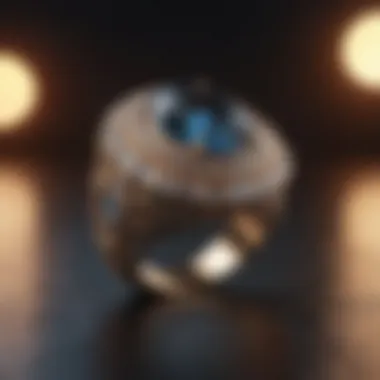

Regional Influences on Jewelry Trends
Understanding regional influences on jewelry trends is crucial for grasping the dynamics of this industry. Each region has its own distinct cultural background, heritage, and aesthetic preferences that shape the designs and materials used in jewelry. These influences can inform consumer purchasing behavior, leading to preferences for styles that resonate with local customs and values. Moreover, global connectivity means that trends can flow across borders, creating a melting pot of ideas and forms. Thus, analyzing these influences helps break down the complexities of consumer choices in the jewelry market, offering richer insights into current and future trends.
European Trends
Europe is a key player in the jewelry industry, showcasing diverse styles that often reflect its rich history and modern sensibilities. Trends such as intricate craftsmanship and vintage styles continue to gain popularity, often seen in the works of European designers. Vintage jewelry has a distinct allure, connecting consumers to stories from the past. In particular, Art Deco and Victorian era designs often influence modern pieces, presenting historical elegance that appeals to many.
Furthermore, sustainable practices are taking hold in Europe. Many brands focus on ethically sourced materials, catering to a growing audience that prioritizes responsible consumption. This trend is significant as it mirrors a broader societal shift towards environmental consciousness. The rise of jewelry brands promoting transparency in sourcing and production signifies a new way of connecting with consumers who seek authenticity.
- Key Elements of European Trends:
- Vintage influences remaining strong.
- A focus on sustainable and ethically sourced materials.
- Craftsmanship that emphasizes uniqueness and personal stories.
Asian Market Influences
The Asian market has become pivotal in shaping modern jewelry trends, offering a blend of traditional and contemporary designs that resonate both locally and globally. Countries like Japan, China, and India introduce unique aesthetic values based on their cultural contexts. For instance, traditional motifs often find their way into modern jewelry, creating pieces that are both timeless and relevant. The incorporation of symbols carries significance, which appeals to consumers seeking deeper connections with their adornments.
Moreover, the booming demand for custom jewelry is a notable phenomenon in Asia. Consumers increasingly prefer personalized designs that reflect their individuality, pushing jewelers to innovate. In addition to this, major Asian urban areas like Hong Kong and Seoul heavily influence international trends. They showcase a penchant for bold colors and innovative materials, driving designers to adapt to these fast-evolving tastes.
- Key Elements of Asian Market Influences:
- Fusing traditional motifs with modern aesthetics.
- An emphasis on personalization and unique design.
- Rapidly changing trends driven by key urban centers.
"Understanding regional influences not only enhances product relevance but also strengthens brand loyalty, as consumers resonate more with cultural narratives."
Impact of Social Media on Jewelry Trends
The role of social media in shaping jewelry trends cannot be underestimated. As a dynamic platform for communication and expression, social media influences how consumers perceive and interact with jewelry. It directly affects purchasing decisions and trends by enabling brands and designers to connect with their audience in real-time. This section addresses the platforms that dominate the jewelry narrative and the role of influencers in this evolution.
Platforms Shaping Jewelry Aesthetics
Various social media platforms significantly contribute to shaping jewelry aesthetics. Instagram remains a powerhouse for visual storytelling, allowing designers to showcase their work through stunning images and engaging videos. The hashtag function helps both consumers and creators discover new trends, materials, and styles.
Pinterest is another essential platform for inspiring consumers. Users turn to Pinterest to find ideas, often leading to direct purchases. More recently, TikTok has emerged as a pivotal platform; its short-video format allows for creativity and spontaneity, presenting jewelry in ways audiences may find relatable and entertaining.
The impact of these platforms extends beyond marketing. They facilitate a community around jewelry design, where feedback is immediate and trends can emerge organically. For example, posts by brands can highlight specific pieces that gain traction among consumers. When a design captures attention, it can quickly lead to increased demand, changing the landscape of what is considered fashionable.
Influencers and Their Role
Influencers play a crucial role in the jewelry industry, acting as connectors between brands and consumers. Their ability to reach wide audiences transforms how jewelry is marketed. With their personalized touch, influencers can give recommendations or showcase styles in a way that feels authentic.
Some notable influencers specifically focus on jewelry, presenting collections from various designers or even their creations. Their endorsements often lead to a surge in interest for certain pieces and styles.
Moreover, influencers can dive into niche markets, appealing to specific segments by highlighting sustainable or artisanal brands. Their engagement fosters a sense of trust and community, often guiding consumer preferences.
Epilogue and Future Outlook
Understanding the conclusion and future outlook of jewelry trends is crucial for grasping the evolving landscape of this industry. As consumer preferences shift and new technologies continue to emerge, it is essential to anticipate what the next wave of trends will look like. This section not only synthesizes the key points discussed throughout the article but also places them in the context of upcoming changes. The ability to navigate these trends can empower consumers and designers alike, allowing them to make informed decisions that align with their values and aesthetics.
Anticipated Future Trends
In the coming years, several trends are poised to gain momentum in the jewelry sector. Among them are:
- Increased use of sustainable materials: The demand for eco-friendly options will likely expand, encouraging makers to explore alternative materials that minimize environmental impact.
- Personalization: This trend is expected to further evolve, allowing consumers to express their individuality more readily. From customizable designs to bespoke pieces, the desire for unique jewelry will remain strong.
- Technological integration: The rise of augmented reality and artificial intelligence will shape how consumers shop for jewelry, making it more convenient and tailored to personal preferences.
- Regional cross-pollination of styles: Globalization continues to influence jewelry design, leading to a fusion of aesthetics from different cultures. This blending opens new avenues for inspiration and creativity.
"The future of jewelry is all about integrating personal stories with innovative design."
Final Thoughts on Jewelry Evolution
The evolution of jewelry trends reveals much about societal values and technological advancements. As we have explored, these trends are not merely about aesthetics; they reflect deeper shifts in consumer consciousness. The appreciation for craftsmanship, sustainability, and individuality will only grow stronger as we move forward. Jewels are more than adornments; they are symbols of identity and culture. Understanding this evolution enriches our appreciation for the artistry involved in jewelry making.
In summary, tracking the changes in jewelry trends offers valuable insights into both personal expression and global movements. Future developments will likely shape how we view and wear jewelry, making it a relevant and meaningful component of our lives.







